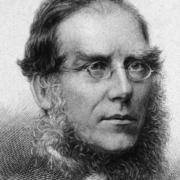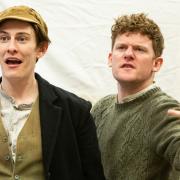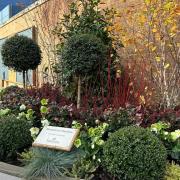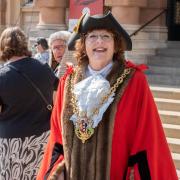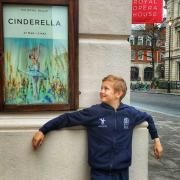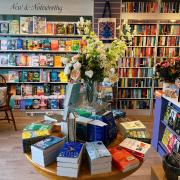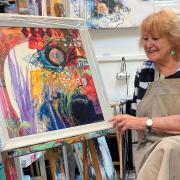Sarah Doig explores the life of one of Britain’s best known historical novelists, Norah Lofts, who hailed from Bury St Edmunds. Location photography by Tony Scheuregger

“One excellent test of love is the response to the beloved’s name.” This is how the historical novelist, Norah Lofts, began an article in the East Anglian Magazine in April 1970. The title of the piece was simply ‘Bury St Edmunds: my love’. And it was this beautiful Suffolk town, and the wider East Anglian landscape, that provided seemingly boundless inspiration for this prolific writer.
Norah Ethel Robinson was born into a Norfolk farming family in August 1904, and it was only because of her father’s untimely death in 1913 that his widow and children moved to Bury St Edmunds. There, Norah attended the Guildhall Feoffment Girls School and the County Grammar School for Girls where her talent for English and history was nurtured. She left Bury to train as a teacher in Norwich (“my first exile”), but returned as soon as she could, taking a teaching position at her old school, the Guildhall Feoffment. Norah married Geoffrey Lofts in 1933 and, a few years later, turned her back on the teaching profession to concentrate on writing.

Combining her love of history and of story-telling, Norah threw herself into historical fiction. Most of her novels are based in East Anglia or have a strong connection to the region. She once said: “I do love East Anglia and East Anglian character. I write about it because it’s what I admire most and feel and know best.” Lofts’ passion for old houses – “not great estate, but good solid houses in which good solid people have lived for hundreds of years” – extended to her own property; the Grade One listed Northgate House in Northgate Street, Bury St Edmunds, in which she lived from 1955 through to her death in 1983.
It is a house within a house, a Tudor timber frame clad in Queen Anne and Georgian red brick. It mirrors the houses Lofts writes about in her novels, most notably in Bless This House, which charts the fortunes of an Elizabethan manor, and A Wayside Inn, which recounts the history of a property from Roman times through to the present day. But it is her Suffolk Trilogy – The Town House of 1959, The House at Old Vine published in 1961 and The House at Sunset which came out a year later – which is now considered her finest work.

The trilogy, essentially one continuous book, spans 600 years in the history of a house in the fictional Baildon, a town using Bury as its model, although the house itself is said to have been based on a property in Hadleigh. It follows the history of the house through its inhabitants, starting with Martin Reed who is born an agricultural labourer and dies a rich wool merchant in the 1450s. This character is said to have been based on the Bury St Edmunds merchant and philanthropist Jankyn Smith, whose charity contributed to the eventual foundation of the Guildhall Feoffment.
But Lofts’ novels were not just about bricks and mortar. Unlike her contemporaries in the historical romance, Norah was more concerned with the psychology of her characters, rather than the amorous adventures they got up to. A theme that runs through many of her novels is the strength of character of her heroines. The love story is always more low key. In 1942, Norah Lofts summed up the essence of historical fiction: “And so out of the bits and pieces I could gather, out of my own imaginings and speculations, I built up a picture and a story… After all, how much nearer, even with much documentary evidence, can we come to understanding the myriad dead who have gone to their graves, carrying their real secrets, of motive and essence and personality, into the silence with them?”

With over 40 historical novels to her name, as well as short stories, biographies, children’s books and works of non-fiction, Norah Lofts was a household name in Britain. By the early 1970s she had notched up sales of around 2 million paperbacks in this country, as well as several European countries, Canada, Yugoslavia and Brazil.
But it was in the United States that Lofts achieved greatest acclaim as an historical novelist: no fewer than three of her novels had been chosen by the Literary Guild of America to be printed in their special editions. It was said that a high percentage of her fan mail came from the United States alone, and that it was not uncommon for American visitors to England to make a special visit to Bury St Edmunds to photograph the front of her Northgate Street house.

By all accounts, Norah was a modest, albeit colourful, individual. In 1978, she pulled off a rather spectacular stunt which further proved her worth as a writer. She entered her Victorian novel, The Day of the Butterfly, into the newly-instituted, annual Historical Novel Prize in Honour of Georgette Heyer. But she did so under a pseudonym. Norah duly won the prize and came clean to the judges that she was, in fact, a well-established author rather than the new talent the competition had been set up to spot. In winning, Norah had proved that her work stood up on its own merits, rather than merely having her name attached to it.
Although there will be many Suffolk residents today who will never have heard of Norah Lofts, her historical novels continue to prove popular with library users. And in 2014, the well known historical author, Alison Weir, named Lofts’ Suffolk Trilogy as her book of a lifetime. Weir says: “It is, simply, the most outstanding historical novel that I have ever read, and my favourite book of all time, to which I return again and again… [Norah Lofts] deserves to be accounted one of the great writers of the 20th century”.

Following the death of her first husband, Norah married Dr Robert Jorisch in 1949. Along with fellow Hungarian émigré, Martin Neumann, Jorisch had, in the 1920s, been instrumental in the construction of the sugar beet factory in Bury, serving as its first general manager. The factory, of course, remains a prominent local landmark to this day.
But, as with many other developments in 20th century Bury, it was not without opposition. In fact, in the 1950s and 60s, Norah served under her new married name as a town councillor as an independent, fighting vehemently, and successfully, against a threatened demolition of the old Corn Exchange to build a complex of new shops. Her determination to preserve Bury’s heritage also saw her serve on the original committee to draw up plans, and raise funds, for the restoration of the Regency Theatre Royal.

With so much history at every turn in the town, we should perhaps not be surprised that such an accomplished historical novelist should have drawn inspiration from her surroundings. And Norah acknowledged this in her 1970 magazine article, saying: “I have no doubt that I owe Bury St Edmunds, its historic past, its market, its squares, its Tudor, Georgian, and even its Victorian houses, a certain debt; I breathed its air; I absorbed, unconsciously, its atmosphere”.




